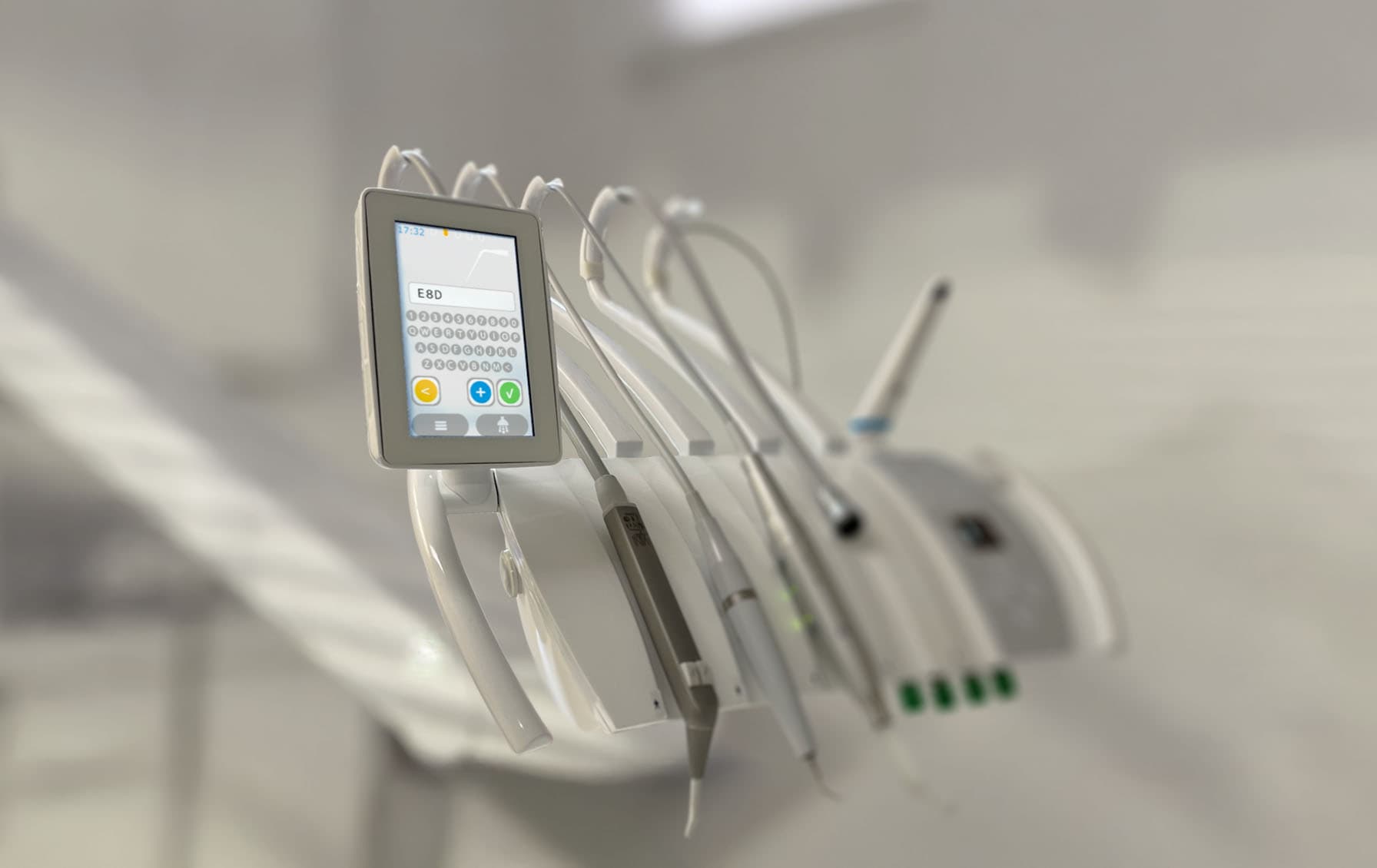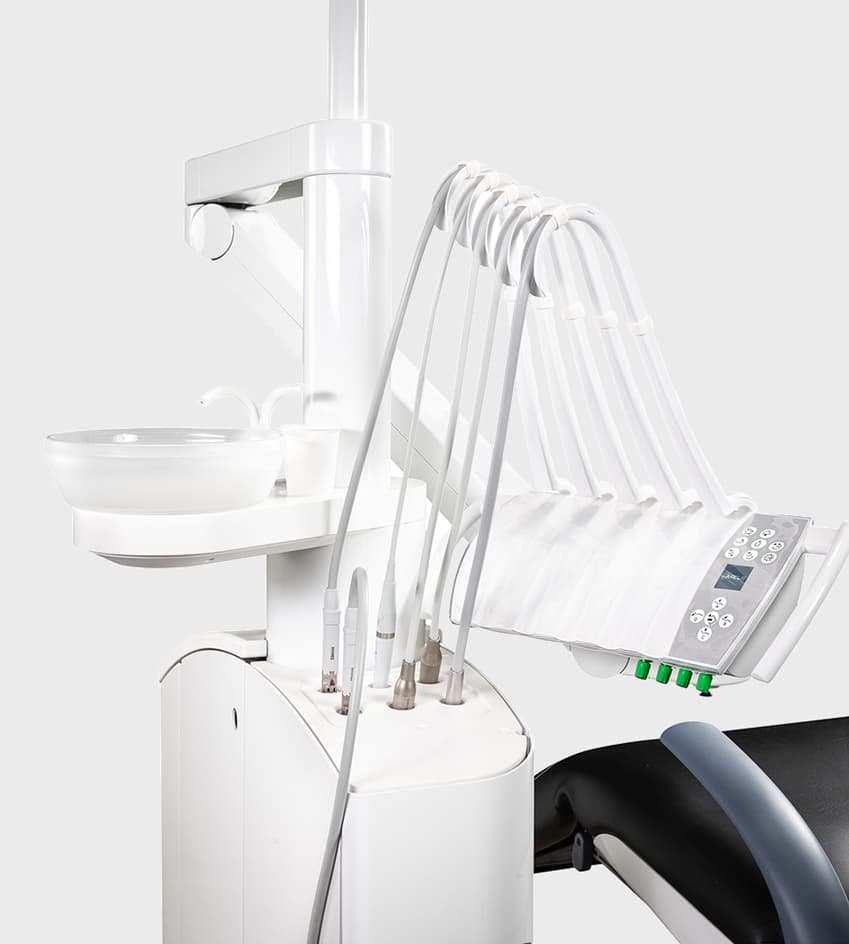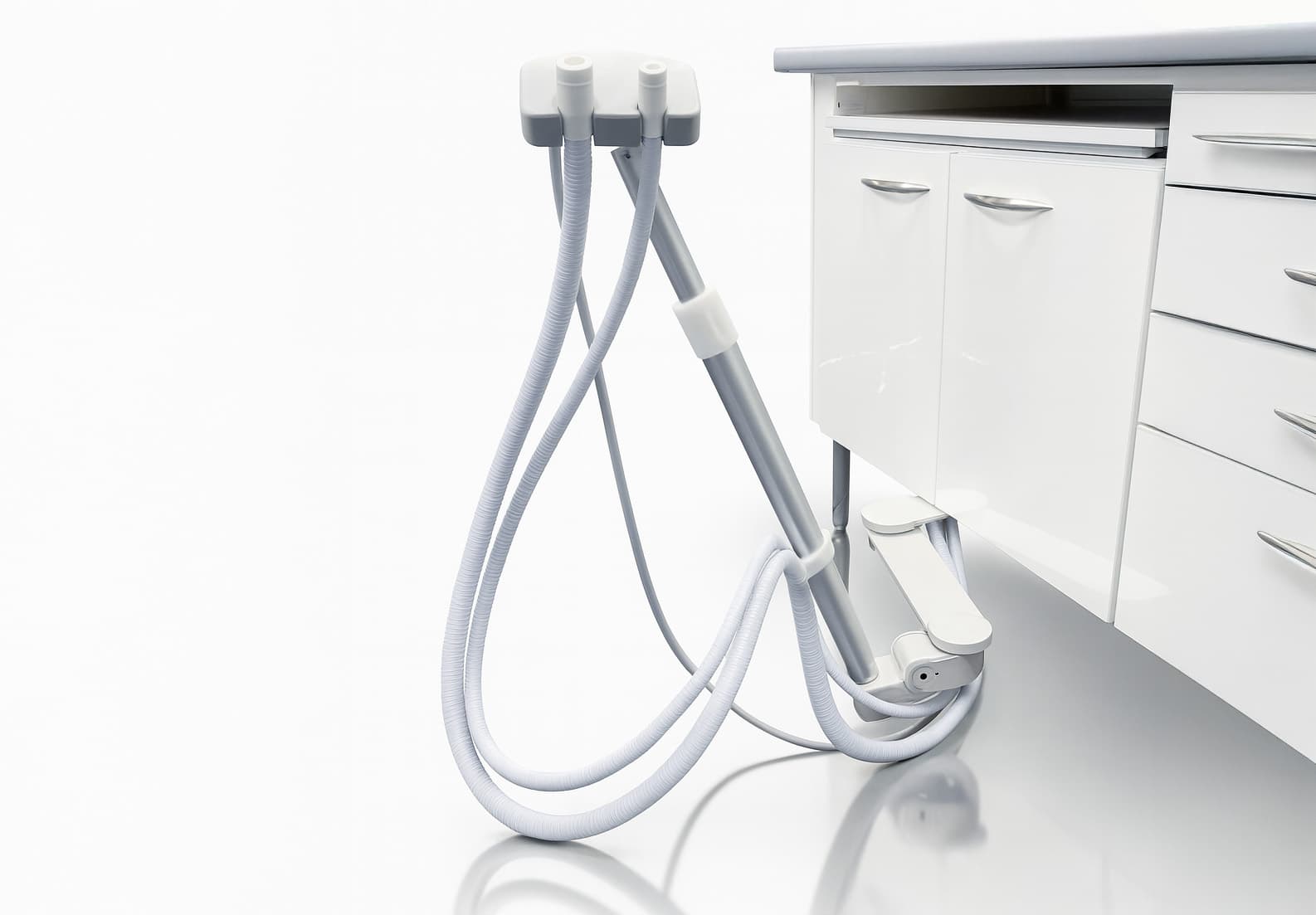
NSK Varios 970 & integrated NSK Varios 170
Published 25.07.2025

What is the difference between the NSK Varios 970 table-top device and the integrated Varios in the Fimet dental unit?
There is, in a way, no difference — and yet, a great deal. Let’s go through the details to better understand the distinctions. In fact, the comparison is quite straightforward.
NSK Varios has a loyal user base who refuse to use any other ultrasonic scaler. It offers versatile features, sufficient power, and a wide selection of tips.
The NSK Varios 970 is a table-top and thus portable device. However, when moving the unit, one must consider the connection to the water supply. Without it, only the bottled water system can be used.
The NSK Varios 170, by contrast, is an integrated version, installed directly into the dental treatment unit — such as in Fimet units, when selected by the customer. The underlying technology is identical: the same electronic control board, the same Varios2 Lux handpieces, and the same functional capabilities. The main differences are found in the user interface, ergonomics, and cost.
The Varios 970 offers a traditional user interface. A button is used to switch between treatment modes (Paro, Endo, General), and water flow is adjusted with a knob on the side. There are no preset settings for individual tips; instead, information about them must be looked up in a separate tip guide. The device also includes a cleaning program that flushes water and/or disinfectant through the tubing and handpiece. Waste water must be collected separately or discharged over a regular sink.

If a dental unit with an ultrasonic scaler is already available in the room, then investing in a table-top device is redundant — and expensive. The total cost can reach several thousand euros, especially if a connection to the mains water supply needs to be installed.
In Fimet’s touchscreen models, such as those in the Arcus and Neo product family, the NSK Varios 170 is used. Varios can also be integrated into other models, but the updated user interface in these versions enables new functional features.
Tip settings and images of the tips are preloaded into the interface as presets. By entering the name of the tip, the standard NSK factory setting is automatically applied. If more power is needed, the output can be manually increased. The interface also allows the user to save up to four tips in a quick-access menu, making tip selection fast and easy.
Water flow is adjusted steplessly using a knob located under the instrument bridge.

The handpiece can be positioned close to the patient. Varios can be operated via the doriot arm, or alternatively, the tubing can be released from the arm, allowing the handpiece to be used without any pulling tension.


The disinfection program is a standard feature of the dental unit. Instruments are placed in their holders, and the automation takes care of the rest, disinfecting not only the scaler but all other instruments on the unit as well. There are no additional costs for the acquisition of Varios or for the water connection, as they are standard features included with Fimet dental units.
The differences in foot controls are significant. For Fimet dental units, there are two different types of foot pedals available. In contrast, the Varios 970 device comes with only one fixed type of foot control.

The user can choose how to control the power level for Varios tips in Fimet dental units — either stepwise based on selected power level, or steplessly (analog control). Power can be selected from 1 to 10 directly via the foot pedal (see image: ON/OFF). Alternatively, stepless adjustment is possible using vertical or horizontal foot pedals (see image: ANALOG).

The accompanying image shows the foot control of the NSK Varios 970 table-top unit. It functions only according to the power level selected from the control panel — power cannot be adjusted via the foot pedal. It operates strictly in an on/off manner.
It’s fair to ask: Can a product that’s already proven to be excellent still be improved further — through enhanced usability features in the user interface and well-executed integration?
What do you think?




